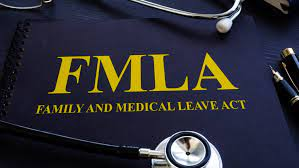The Family and Medical Leave Act (FMLA) is a U.S. federal law that gives employees the right to take up to 12 weeks of unpaid, job-protected leave per year for certain family and medical reasons. The FMLA was enacted in 1993 and is administered by the U.S. Department of Labor’s Wage and Hour Division.
can you collect unemployment while on unpaid fmla
The leave can be taken all at once or intermittently, as needed. The law covers both full-time and part-time employees who have been employed by their employer for at least 12 months (not necessarily consecutively). Employees are also eligible if they have worked at least 1,250 hours during the 12 months prior to taking leave.
An employee who takes FMLA leave is entitled to continued health insurance coverage under his or her employer’s group health plan during the leave period. In addition, the employee has the right to return to the same job (or an equivalent job) after the leave period ends.
What is FMLA?
The Family and Medical Leave Act (FMLA) is a federal law that provides employees with up to 12 weeks of unpaid, job-protected leave per year. Employees are eligible for FMLA leave if they have worked for their employer for at least 12 months, have at least 1,250 hours of service during the 12 months prior to the start of leave, and work at a location where the company employs 50 or more employees within 75 miles.
Once an employee has met these eligibility requirements, they can take FMLA leave for their own serious health condition, to care for a family member with a serious health condition, or for certain military family caregiving and leave purposes. Employees who take FMLA leave are entitled to continued group health insurance coverage under the same terms and conditions as if they had not taken leave.
How do unemployment and FMLA work together?
The Family and Medical Leave Act (FMLA) provides certain employees with up to 12 weeks of unpaid protected leave per year for the birth or adoption of a child, serious health condition of the employee or an immediate family member, or for any qualifying exigency arising out of the fact that a family member is on active military duty. In most cases, an employee who takes FMLA leave is entitled to continue their health insurance coverage under their employer’s group health plan. The employee is also entitled to reinstatement to their previous position or an equivalent position with equivalent pay and benefits upon returning from leave.
What are the benefits of unemployment and FMLA?
The benefits of unemployment and FMLA are many. Unemployment provides a safety net for workers who have lost their jobs, while FMLA provides job protection and security for those who need to take time off for family or medical reasons. Both programs help to ensure that workers are able to support themselves and their families during difficult times.
What are the drawbacks of unemployment and FMLA?
The main drawbacks of unemployment are that it can be difficult to find a job, and when you do find a job, it may not pay as much as your previous job. Unemployment can also lead to financial difficulties and mental health problems.
How can I file for unemployment and FMLA?
There are a few steps you need to take in order to file for unemployment and FMLA. First, you will need to gather all of the necessary paperwork. This includes your most recent pay stub, your termination letter, and any other relevant documentation. Next, you will need to fill out the unemployment application. Once you have completed the application, you will need to submit it to your state’s unemployment office. Finally, you will need to wait for a determination from the unemployment office. If you are approved for unemployment benefits, you will be able to begin receiving them within a few weeks.


More Stories
TwentyOneVc.com Review Unveils a Platform for Successful Traders
Gabriel Massuh: Turning Ideas into Successful Businesses
The Importance of E-invoicing Compliance in the Globalized Economy